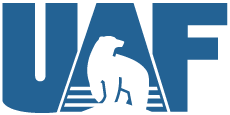Permits & Regulations
Policy for Unmanned Aerial System Operations (UAS) at Toolik Field Station
Objectives:
To provide a safe operating environment for all researchers, aviators, and other people
and property in
the area of Toolik Field Station (TFS),
To comply with all Federal Aviation Administration, University of 91视频, and other
applicable rules and
regulations,
To enable research development in the field of UAS (including winged and rotary-wing
aircraft, balloons,
and kites), as possible, once safety and regulatory requirements are fulfilled.
Requirements for ALL UAS Operations at Toolik Field Station
1. All TFS residents who operate a UAS should review Advisory Circular 107-2A and
60-22.
2. All TFS residents who operate a UAS must be aware of special airspace restrictions
as presented in
the 鈥淩estricted and Prohibited UAS Airspace near Toolik Field Station" map attached
to this policy
document. All UAS pilots must also be aware of equipment in the Toolik Lake Research
Natural Area
and take steps to mitigate risk of property damage.
3. All TFS residents who intend to operate a UAS must contact the UAS coordinator
prior to their first
flight at the station to review proposed UAS areas, UAS operational plans, and safety
plans.
4. In the morning before a UAS flight(s), all UAS pilots are expected to check the
online PFS helicopter
calendar and be aware of PFS helicopter operational areas.
5. All UAS pilots must file a weekly Drone Flight Plan with the UAS Coordinator with
a copy provided by
the UAS Coordinator to the Battelle ARO, Toolik Helicopter Coordinator.
6. UAS flights within 0.5 miles of Trans-91视频 Pipeline require permission from Alyeska
Pipeline
Service Company (see attached map).
7. No UAS flights are permitted within or over the Toolik Field Station BLM Lease
Area (see attached
map) without prior approval from the Toolik Field Station Camp Manager.
Requirements for Recreational UAS Operations at Toolik Field Station
1. TFS residents flying a UAS for recreational purposes must hold a current FAA Trust
certificate and
provide a digital copy of their certificate and UAS registration number (unless UAS
weight <250g) to
the UAS coordinator.
2. Recreational UAS pilots must follow regulations outlined in 49 USC 44809 and review
AC 91-57C.
3. Recreational UAS pilots must first receive permission from the on-site helicopter
coordinator before
operating their drone in the FAA FRIA surrounding Toolik Field Station.
4. In the event of a conflict in airspace use between a UAS pilot flying recreationally
and a UAS pilot
flying for research purposes, the UAS pilot flying for research will have priority.
Requirements for Research/Academic UAS Operations at Toolik Field Station
1. TFS residents flying a UAS for research or academic purposes must follow the rules
stipulated in 14
CFR 107, 14 CFR 48, and must hold a current FAA small UAS certificate (or hold a current
Part 61
pilot certificate and complete an FAA UAS on-line course).
2. TFS residents flying a UAS for research or academic purposes must email a digital
copy of their FAA
small UAS certificate (or Part 61 pilot certificate with UAS course completion) to
the UAS
Coordinator prior to arriving at Toolik Field Station (contact information below).
3. All UAS platforms flown under Part 107 must be registered with the FAA and marked
as per 14 CFR
48. The FAA registration number for each UAS operated at Toolik Field Station must
be emailed to
the UAS Coordinator.
4. All UAS research operations in the Toolik Lake Research Natural Area and on other
lands managed
by the Bureau of Land Management (BLM) must be disclosed to the BLM.
5. Upon arrival at the station and before the first flight, the research project鈥檚
Pilot(s) in Command
must meet with the UAS coordinator and PFS helicopter coordinator to provide any updates
on the
project鈥檚 UAS areas, operational plans, and safety plans. At this meeting, the PFS
Helicopter
Coordinator may establish daily reporting requirements for the project.
6. UAS operations for academic or research purposes must designate a knowledgeable
and
experienced radio operator to be in contact with the PFS helicopter coordinator and
monitor local
air traffic frequencies. Projects are responsible for providing their own airband
radio tuned to CTAF
122.9MHz while operating their UAS in the field to monitor and respond to local air
traffic
communication. TFS VHF helicopter coordinator radios operate on different public service
frequencies and cannot communicate with civilian aviation aircraft.
Support and Points of Contact:
Randy Fulweber UAS Coordinator: rafulweber@alaska.edu
Battelle ARO, Toolik Helicopter Coordinator: toolikhelo@polarfield.com



